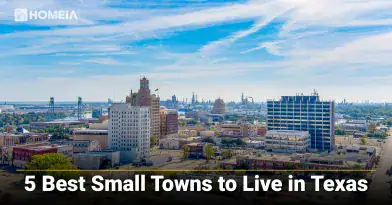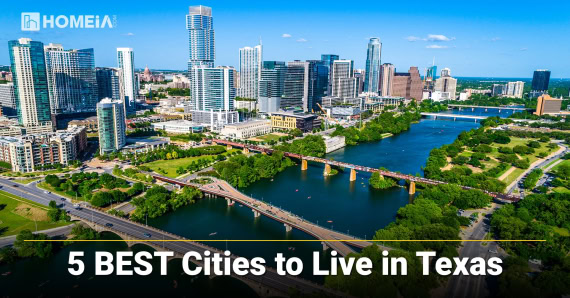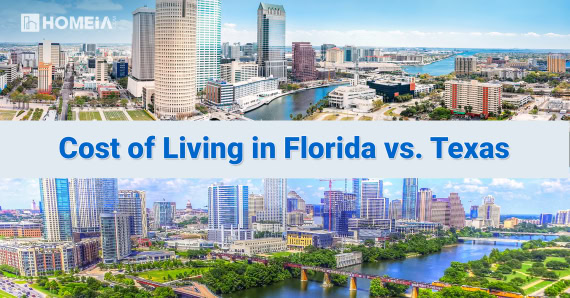The Pros and Cons of Living in Texas
- Local Editor:Local Editor: Alexandra Christiansen
Published: May 26, 2025
- Category: City Living Guide
Howdy! Thinking about moving to the Lone Star State? You’re not alone. Moving to Texas is trending as the state continues to attract new residents with its economic opportunities, cultural vibrancy, affordable cost of living, and distinctive lifestyle.
Relocating to a new state is a significant decision that requires a thorough understanding of both statewide trends and the unique characteristics of individual communities. Moving to Texas presents both advantages and challenges. In this comprehensive relocation guide, we will explore the pros and cons of living in Texas, highlight top cities for young professionals, families, and retirees, and provide insights to help you find your perfect new community in Texas. Whether you are drawn by job opportunities, family-friendly neighborhoods, tax benefits, the promise of a lower cost of living, or the beautiful Blue Bonnets, understanding Texas’s strengths and drawbacks is essential before making your move.
8 Key Steps to Buy a Mobile Home in Texas
Texas is a popular place to own a mobile home—and to manufacture them! If mobile home life is for you, you’ll have to do some research before you buy. We’ll help you learn the ins and outs of buying a mobile home in Texas so you’ll have a new place to hang your hat in no time…
Table of Contents:
Texas’s Pros

- Affordable Cost of Living: Texas stands out for its affordable cost of living compared to many other states. With median home prices ranging from $308,000 to $348,000, housing costs are approximately 16% lower than the national average. Everyday expenses such as groceries, healthcare, and transportation are generally at or below the national average, allowing residents to stretch their budgets further. Rental rates are also favorable, with the average rent for a one-bedroom apartment around $1,251 per month, making Texas an attractive destination for individuals and families seeking financial flexibility.
- No State Income Tax: One of Texas’s most well-known financial benefits is its lack of a state income tax. This tax-friendly policy allows residents to retain more of their earnings, which is great for working professionals and retirees alike. Social Security and retirement income are not taxed at the state level, making Texas a popular choice for those looking to maximize their post-career savings.
- Booming Job Market and Economic Opportunity: Texas boasts a robust and diverse economy, with a GDP exceeding $2.6 trillion. Major industries include technology (especially in Austin), energy (Houston), healthcare, finance, and manufacturing. The state is home to the headquarters of several Fortune 500 companies, such as ExxonMobil, AT&T, Dell, and McKesson. Texas’s business-friendly environment consistently attracts startups and new enterprises, fueling job growth and innovation. The unemployment rate remains low, particularly in urban centers, and opportunities abound for professionals in a variety of sectors.
- Mild Winters and Abundant Sunshine: The Texas climate is generally mild throughout the winter months, with average lows rarely dipping below 40°F in most regions. The state enjoys over 200 sunny days per year, making it a haven for those who enjoy outdoor activities year-round. While summers can be hot, the abundance of sunshine supports an active lifestyle and encourages residents to take advantage of Texas’s natural beauty.
8 Key Steps to Buy a Mobile Home in Texas
Texas is a popular place to own a mobile home—and to manufacture them! If mobile home life is for you, you’ll have to do some research before you buy. We’ll help you learn the ins and outs of buying a mobile home in Texas so you’ll have a new place to hang your hat in no time…
- Diverse Culture and Entertainment: Texas is renowned for its rich cultural tapestry, shaped by a blend of Hispanic, Black, White, and Asian communities. The state’s cities and towns host a wide array of festivals, parades, and culinary events that celebrate this diversity. From world-famous BBQ and Tex-Mex cuisine across the state to vibrant music scenes in Austin and Houston, Texas offers residents endless opportunities to experience new flavors and traditions. Events, including rodeos, music festivals, cook-offs, and arts performances, fill the calendar throughout the year. You can’t forget about Friday Night Lights or that Aggie and Longhorn rivalry, either!
- Outdoor Recreation and Natural Beauty: With over 80 state parks, including Big Bend, Guadalupe Mountains, and Padre Island, Texas offers residents access to hiking, camping, fishing, and wildlife viewing in a variety of settings. The Gulf Coast provides miles of beaches, while central and west Texas are dotted with lakes and rivers perfect for boating and swimming. Sports enthusiasts will also find plenty to enjoy, as Texas is home to professional teams in every major league and boasts a strong culture of high school and college athletics. Horns up or down?
- Family-Friendly Communities: Many Texas cities, such as Frisco, Laredo, and Atascocita, rank among the top in the nation for families with children, thanks to excellent schools, low crime rates, and abundant amenities. The state’s rapid demographic growth, particularly among young families, speaks to its appeal as a place to raise children. Parks, community centers, and youth sports programs are widely available, fostering a supportive environment for families.
- Friendly, Welcoming People: Deep in the heart of Texas, Texans are known for their southern hospitality and willingness to welcome newcomers. Whether you are moving from another state or another country, you will likely find neighbors eager to help you settle in and become part of the community.
The Cost of Living in California vs Texas (Updated)
Both California and Texas have not only the largest populations but the largest habitable landmass of any of the U.S. states. This means there are not a lot of statements that can be made which represent either state in totality. We’ll let you know here the general cost factors to consider when making a decision to relocate to either state…
Texas’s Cons

- Hot Summers and Extreme Weather: Texas is famous for its hot summers, with temperatures regularly exceeding 100°F in central and southern regions. High humidity is common along the Gulf Coast and in eastern Texas, making summers feel even more intense. The state is also prone to severe weather events, including hurricanes in coastal areas, tornadoes in the north and central regions, hailstorms, and occasional flooding. Residents must be prepared for these natural hazards, especially if relocating from milder climates.
- High Property Taxes: Although Texas does not levy a state income tax, it compensates with some of the highest property taxes in the nation. Rates typically range from 1.75% to 2.3% of a home’s assessed value, which can significantly affect the affordability of homeownership. This is an important consideration for those planning to buy property, particularly in urban and suburban counties where home values are rising.
- Traffic Congestion and Urban Sprawl: Rapid population growth in Texas’s major cities has led to significant traffic congestion and urban sprawl. Commuters in Houston, Dallas, and Austin often face long travel times, and public transportation options are limited outside of city centers. As a result, car ownership is almost a necessity for most residents, and daily commutes can be a source of frustration.
- Unpredictable Housing Market: While Texas’s housing market remains more affordable than those in many coastal states, recent years have seen rapid growth and increased inventory. Some experts predict a potential price correction in 2025, particularly in cities like Dallas, Houston, and Austin. This volatility can impact both buyers and sellers, making it essential to stay informed about local market trends.
The 10 Cheapest Places to Live in Texas (updated)
They say everything is bigger in Texas, and for good reason. From some of America’s largest and active metropolitan cities to the host of recreational activities for people of all ages across the state to the many bigger-than-life personalities who call Texas home, Texas has plenty to offer for everyone. here’s the list of 10 lowest cost of living places…
- Limited Public Transportation: Public transportation infrastructure in Texas is similar to the rest of the United States with limited options available like that in New York or California. Outside of central city areas, options are sparse, and most residents rely on personal vehicles for commuting and daily errands. This can be a drawback for those accustomed to robust transit systems or seeking a more walkable lifestyle. The state’s large size also demands that residents own a car for convenient travel.
- Healthcare Access and Quality: While Texas boasts world-class hospitals in urban centers, its public healthcare system ranks low nationally, with 18.4% of residents uninsured—the highest rate in the country. Access to quality healthcare can be limited in rural areas, and newcomers should carefully research local options before relocating.
- Air Quality and Environmental Concerns: Air pollution is a persistent issue in urban and industrial areas, particularly Houston and Dallas, due to traffic and industrial emissions. Water scarcity and drought are also recurring challenges, especially in west and central Texas. These environmental factors can affect quality of life and require ongoing attention from residents and policymakers.
- Power Grid Reliability: Texas operates its own power grid, which has shown vulnerability during extreme weather events. Occasional blackouts and price spikes during emergencies have highlighted the need for infrastructure improvements and emergency preparedness. Some urban areas offer fixed prices for utilities, but this is not the case throughout the state.
- Political and Social Issues: Texas’s political climate is distinct, with ongoing debates over education funding, healthcare, and immigration. The state’s conservative leanings and policy choices may differ from those in more liberal regions, and newcomers should be prepared for a unique political landscape. Protests are also not uncommon in places like Houston or Austin.
8 Key Steps to Buy a Mobile Home in Texas
Texas is a popular place to own a mobile home—and to manufacture them! If mobile home life is for you, you’ll have to do some research before you buy. We’ll help you learn the ins and outs of buying a mobile home in Texas so you’ll have a new place to hang your hat in no time…
Cost of Living in Texas

Texas is recognized for its overall affordability, with a cost of living about 5-7% lower than the national average. Housing costs are especially attractive, but expenses can vary widely depending on the city or region. Below, you’ll find a detailed breakdown of Texas’s major cost categories, followed by a comparison of living costs in the state’s largest cities.
Statewide Cost of Living Overview
| Category | Texas vs. National Average | Typical Monthly/Annual Cost | Notes |
| Overall | 5% lower | $1,962/month (avg. individual) $45,114/year (avg. per capita) | Texas ranks among the most affordable large states |
| Housing (Buy/Rent) | 16% lower | $1,217–$1,374/month (1-bed apt) | Median home price: $299,787 (16% below U.S. avg.) |
| Utilities | 1% higher | $166–$204/month (basic) | Internet: $73–$76/month |
| Food/Groceries | 3% lower | $365/month (individual) | Grocery prices slightly below national average |
| Healthcare | 1% lower | $6,593/year (avg. per capita) | Slightly less than national average |
| Transportation | 6% lower | Gas: $2.93/gallon | Public transit pass: $63/month |
| Goods & Services | 1% higher | – | Includes entertainment, grooming, etc. |
Cost of Living by Major Texas City (Compared to National Average)
| City | Compared to State Avg. | Compared to U.S. Avg. |
| Plano | 16% higher | 10% higher |
| Dallas | 7% higher | 2% higher |
| Austin | 3% higher | 3% lower |
| Houston | 1% lower | 6% lower |
| San Antonio | 4% lower | 9% lower |
| El Paso | 7% lower | 12% lower |
| McAllen | 10% lower | 15% lower |
| Amarillo | 12% lower | 17% lower |
| Brownsville | 11% lower | 16% lower |
Key Takeaways:
- Housing is the largest source of savings in Texas, with median home values and rents well below the national average, especially outside major metros.
- Utilities and internet are slightly higher than the U.S. average, largely due to air conditioning needs in the hot climate.
- Food, healthcare, and transportation are all at or below national averages, contributing to overall affordability.
- Cost of living varies significantly by city: Austin and Plano are pricier, while El Paso, McAllen, and Amarillo are among the most affordable urban areas in the state.
Texas’s cost of living advantage makes it an attractive destination for individuals and families seeking value without sacrificing amenities or quality of life.
15 Best Cities for Families in Texas
There are many employment opportunities throughout the state and many enjoyable communities to call home. We’ve compiled a list of 15 cities that rank high in education, affordability, and safety—areas of interest for many potential homeowners…
Best Texas Cities for Young Professionals
1. Houston
HOMEiA Score: 83/100
- Cost of Living: 6% below the U.S. national average
- Home price to income ratio: $315,000 / $60,000 = 5.25 (buying homes is relatively affordable)
- Income to rent ratio: $60,000 / $17,400 = 3.45 (renting homes is affordable)
Houston is a thriving metropolis known for its robust job market across energy, healthcare, and aerospace, making it a top choice for young professionals seeking diverse career opportunities. The city’s affordable housing, multicultural atmosphere, and dynamic arts and food scenes add to its appeal. Neighborhoods like Montrose and The Heights are especially popular among young adults for their trendy restaurants, nightlife, and easy access to downtown. Not to mention Houston is home to the beloved Astros, Texans, Dynamos and Rockets. If you like sports, Houston has a team for you! Plus, Houston’s cost of living is lower than many other major U.S. cities, allowing newcomers to enjoy urban amenities without breaking the bank.
2. Dallas
HOMEiA Score: 88/100
- Cost of Living: 14% above the U.S. national average
- Home price to income ratio: $370,000 / $65,000 = 5.69 (buying homes is relatively affordable)
- Income to rent ratio: $65,000 / $19,800 = 3.28 (renting homes is affordable)
Dallas offers a vibrant urban lifestyle with a strong economy rooted in finance, technology, and telecommunications. The city’s diverse neighborhoods, expanding job market, and bustling downtown attract ambitious young professionals from across the country. Dallas is also recognized for its lively arts district, food scene, and professional sports teams like the world-famous Dallas Cowboys. With the Cotton Bowl and the famous State Fair of Texas, Dallas is sure to have something happening every weekend. While the cost of living is slightly higher than the state average, salaries are competitive, and the city provides a wide range of housing options to suit different budgets.
5 Best Places to Live in Texas: 2025
Texas is famous for its wide, open spaces, booming economy, the unique blend of urban and rural lifestyles, and delicious food. The Lone Star State has it all: rolling hills with breathtaking scenery for miles, vast deserts, and bustling metropolitan areas…
3. San Antonio
HOMEiA Score: 89/100
- Cost of Living: 8% below the U.S. national average
- Home price to income ratio: $295,000 / $55,000 = 5.36 (buying homes is affordable)
- Income to rent ratio: $55,000 / $15,600 = 3.53 (renting homes is affordable)
San Antonio is rapidly gaining recognition as a hotspot for young professionals, particularly in healthcare, cybersecurity, and the military sector. The city’s rich history, affordable living, and welcoming atmosphere make it attractive to newcomers. San Antonio’s River Walk stretching across downtown, vibrant festivals, and culinary diversity provide ample opportunities for entertainment and socializing after work. A growing music scene, San Antonio is also buzzing with emerging artists. With a low cost of living and a growing job market, San Antonio is an excellent choice for those starting their careers who are also looking for an artsy place to call home.
4. Austin
HOMEiA Score: 92/100
- Cost of Living: 22% above the U.S. national average
- Home price to income ratio: $495,000 / $78,000 = 6.35 (buying homes is moderately expensive)
- Income to rent ratio: $78,000 / $24,000 = 3.25 (renting homes is affordable)
Austin is the epicenter of Texas’s technology and creative industries, making it one of the best cities in the nation for young professionals. The city’s booming tech sector, anchored by companies like Dell, Apple, and Google, drives a strong job market. Austin’s lively music scene, outdoor recreation, and unique culture attract ambitious workers seeking both career growth and a high quality of life. While housing costs have risen, Austin’s salaries and vibrant social scene help offset expenses for many young adults. The state capital draws big name artists every year and is home to the Texas Longhorns. Everywhere you look, there is something new happening and “keeping Austin weird” as the locals say.
The Cost of Living in Florida vs. Texas: A Comprehensive Analysis
This analysis provides the foundation for making an informed decision based on your circumstances and priorities. Whether you choose Florida’s coastal charm or Texas’s economic opportunities, both states continue to attract new residents with their unique benefits and lifestyle advantages…
5. Plano
HOMEiA Score: 94/100
- Cost of Living: 7% above the U.S. national average
- Home price to income ratio: $450,000 / $95,000 = 4.74 (buying homes is affordable)
- Income to rent ratio: $95,000 / $21,600 = 4.40 (renting homes is affordable)
Plano stands out for its high median income, safe neighborhoods, and proximity to Dallas’s major job centers. The city is home to many corporate headquarters, including Toyota and Frito-Lay, offering excellent employment opportunities. Plano’s top-rated schools, extensive parks, and diverse dining options make it a well-rounded choice for young professionals looking to establish roots while enjoying suburban comfort and urban convenience. The location just above Dallas puts you a part of a rapidly growing community with well-established Texas roots.
Summary Table: Best Texas Cities for Young Professionals
| City | HOMEiA Score | Cost of Living (% Above/Below U.S. Avg.) | Home Price to Income Ratio | Income to Rent Ratio | Key Strengths |
| Houston | 83/100 | 6% below | 5.25 | 3.45 | Growing energy industry, healthcare, cultural diversity, affordability |
| Dallas | 88/100 | 14% above | 5.69 | 3.28 | Growing finance and tech industries, arts, urban lifestyle |
| San Antonio | 89/100 | 8% below | 5.36 | 3.53 | Healthcare, culture, history, affordability |
| Austin | 92/100 | 22% above | 6.35 | 3.25 | Growing tech industry, music, outdoors, vibrant culture |
| Plano | 94/100 | 7% above | 4.74 | 4.40 | Corporate headquarters, safe neighborhoods, high incomes |
5 Best Small Towns to Live in Texas (updated)
Texas small towns attract families seeking charm, opportunity, and community. Our helpful guide highlights Fredericksburg, Dripping Springs, Boerne, Wimberley, and Brenham, sharing key facts on housing, schools, and culture to help you find the perfect place for a cozy, fulfilling Texas lifestyle and informed relocation choice…
Best Texas Cities for Families with Kids
1. Laredo
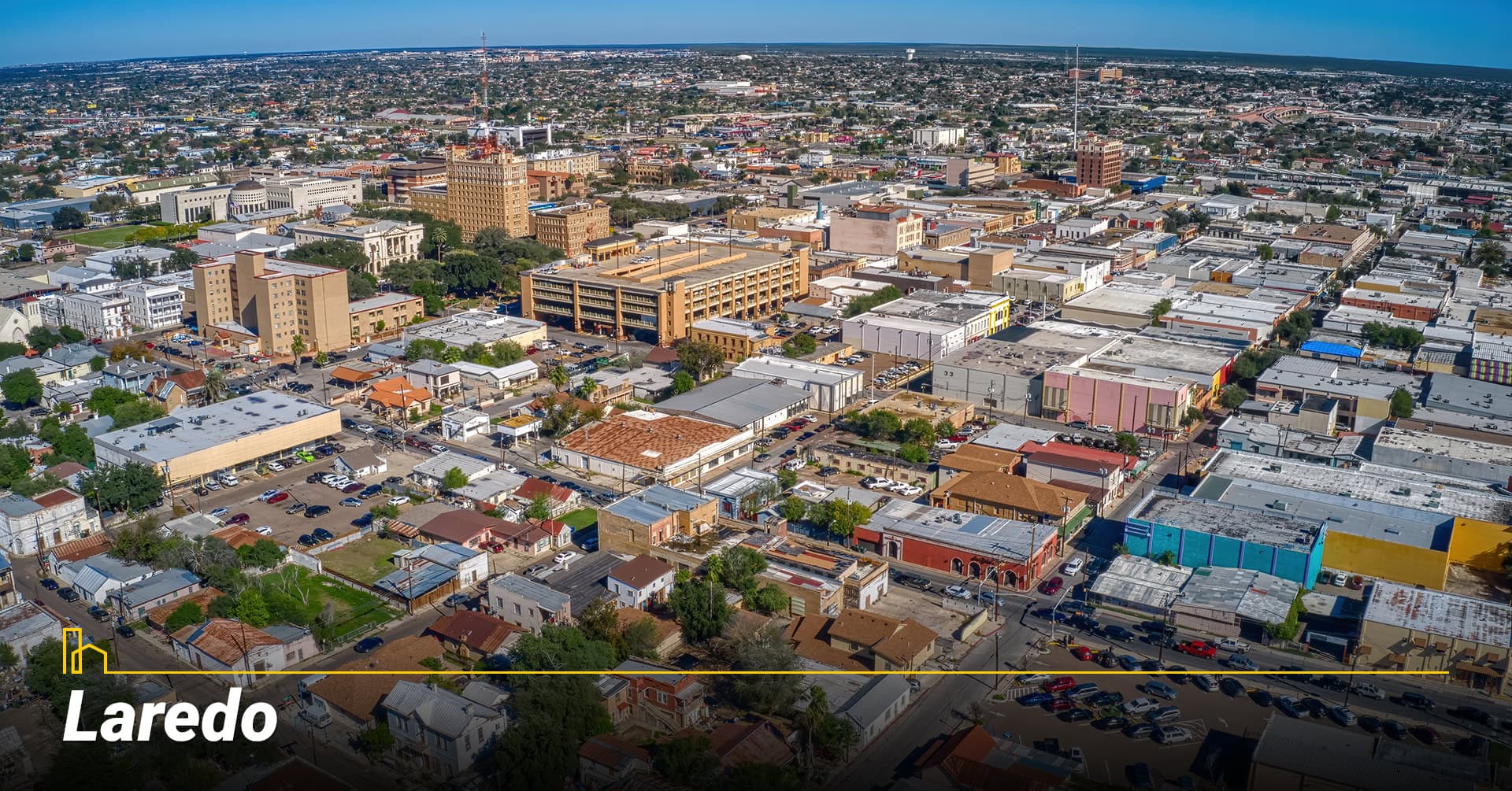
HOMEiA Score: 81/100
- Cost of Living: 18% below the U.S. national average
- Home price to income ratio: $210,000 / $55,000 = 3.82 (buying homes is very affordable)
- Income to rent ratio: $55,000 / $12,000 = 4.58 (renting homes is very affordable)
Laredo is an excellent choice for families seeking affordability, safety, and a strong sense of community. Near the U.S. and Mexico border, Laredo boasts a high percentage of households with children, reflecting its family-oriented culture. Laredo’s public schools are well-rated, and the city offers a variety of parks, recreational facilities, and youth programs. Its low cost of living and welcoming neighborhoods make it particularly attractive for young families starting out. You can also find some great culinary adventures down South.
2. Denton
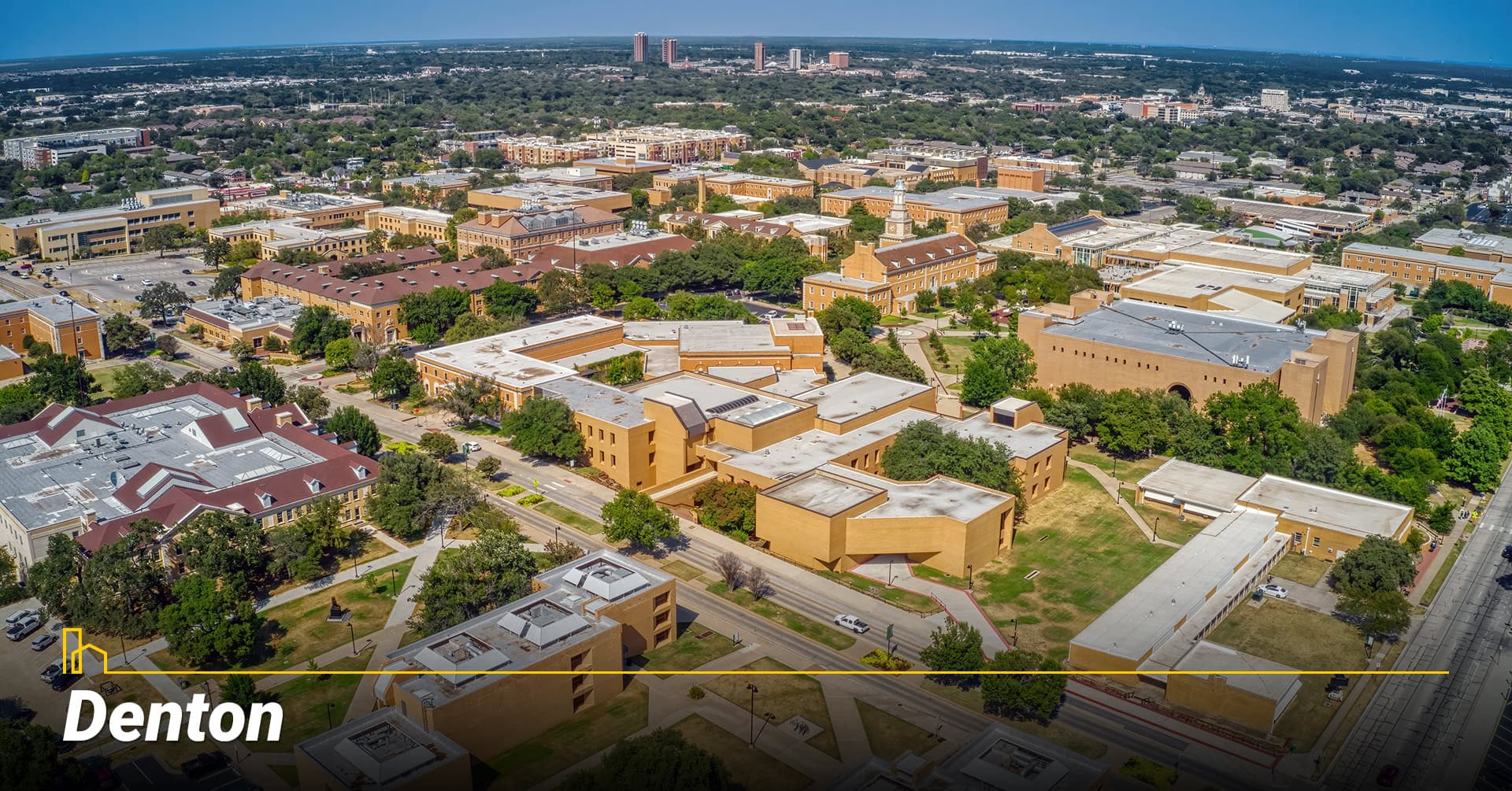
HOMEiA Score: 85/100
- Cost of Living: 7% below the U.S. national average
- Home price to income ratio: $325,000 / $68,000 = 4.78 (buying homes is affordable)
- Income to rent ratio: $68,000 / $17,400 = 3.91 (renting homes is affordable)
Home to the University of North Texas, Denton is known for its strong public schools, vibrant arts scene, and family-friendly amenities. The city’s numerous parks, libraries, and community events provide ample opportunities for children’s enrichment and family bonding. Denton’s safe neighborhoods, affordable housing, and supportive community make it a top pick for families with young kids, especially those seeking a blend of small-town charm and urban accessibility. With the University of North Texas growing every year, Denton is certainly following suit.
12 Key Factors to Know When Living in Dallas, Texas
The city is the 9th largest in the United States. Dallas Texas is a little bit country, a little bit rock ’n’ roll, and a whole lot of history, arts, culture and business in the center of the fourth-largest metropolitan statistical area in the United…
3. Atascocita

HOMEiA Score: 87/100
- Cost of Living: 10% below the U.S. national average
- Home price to income ratio: $320,000 / $85,000 = 3.76 (buying homes is very affordable)
- Income to rent ratio: $85,000 / $18,000 = 4.72 (renting homes is very affordable)
Atascocita is rapidly growing as a family destination thanks to its excellent schools, safe neighborhoods, and abundant recreational options. Situated on Lake Houston, the area features numerous parks, lakes, and family-oriented activities, making it ideal for raising children. With a lower-than-average cost of living and a strong community spirit, Atascocita is especially attractive for families seeking both value and quality of life. The nearby Atascocita Forest offers ample opportunities to enjoy the warm Texas weather as a family.
4. Frisco
HOMEiA Score: 90/100
- Cost of Living: 15% above the U.S. national average
- Home price to income ratio: $520,000 / $120,000 = 4.33 (buying homes is affordable for higher incomes)
- Income to rent ratio: $120,000 / $27,600 = 4.35 (renting homes is affordable)
Frisco consistently ranks among the best places in Texas for families. The city is celebrated for its top-rated public schools, low crime rates, and extensive youth sports and recreation programs. Frisco’s master-planned communities, modern amenities, and family-centric events create a nurturing environment for children. While housing costs are higher than in some other Texas cities, many families find the investment worthwhile for the outstanding schools and quality of life. If you want that small town comfort with a bustling metropolis down the road, Frisco is a top choice.
10 Unique Tips You Should Know About Buying a Home in Texas
Texas offers diverse and vibrant living experiences, attracting many homebuyers from across the country. If you’re planning to settle in this vast and exciting state, here are 10 unique things you should know about buying a home in Texas…
5. Sugar Land
HOMEiA Score: 93/100
- Cost of Living: 13% above the U.S. national average
- Home price to income ratio: $470,000 / $110,000 = 4.27 (buying homes is affordable for higher incomes)
- Income to rent ratio: $110,000 / $24,000 = 4.58 (renting homes is affordable)
Sugar Land is renowned for its excellent public schools, safe neighborhoods, and diverse community. The city offers a wealth of parks and outdoor spaces. The city’s diversity brings delicious culinary adventures and numerous cultural events to the community. Sugar Land’s high median income and strong local economy support a high standard of living, making it a premier choice for families seeking both opportunity and comfort in the Houston metropolitan area. Interested in sports? Sugar Land is home to the Sugar Land Space Cowboys. This family friendly stadium is a great place to spend those beautiful Texas spring days.
Summary Table: Best Texas Cities for Families with Kids
| City | HOMEiA Score | Cost of Living (% Above/Below U.S. Avg.) | Home Price to Income Ratio | Income to Rent Ratio | Key Strengths |
| Laredo | 81/100 | 18% below | 3.82 | 4.58 | Affordable for families, safe neighborhoods, strong community, youth focus |
| Denton | 85/100 | 7% below | 4.78 | 3.91 | Arts, parks, small-town feel with an urban neighbor, and a top school district |
| Atascocita | 87/100 | 10% below | 3.76 | 4.72 | Amazing schools, recreation, good economic value, population growth |
| Frisco | 90/100 | 15% above | 4.33 | 4.35 | Top schools, sports, safe neighborhoods |
| Sugar Land | 93/100 | 13% above | 4.27 | 4.58 | Great schools, diversity, parks, high incomes |
Each of these Texas cities offers a unique blend of affordability, safety, educational excellence, and family-friendly amenities. When choosing your next home, consider both the HOMEiA Score and the factors most important to your family’s lifestyle and aspirations.
Recommended for you
Best Texas Cities for Retirees
1. McAllen

HOMEiA Score: 90/100
- Cost of Living: 21% below the U.S. national average
- Home price to income ratio: $255,000 / $48,000 = 5.31 (buying homes is very affordable)
- Income to rent ratio: $48,000 / $12,192 = 3.94 (renting homes is affordable)
McAllen is a favorite for retirees seeking significant cost savings and warm weather. With a median rent of just over $1,000 and home prices well below the national average, McAllen is one of the most budget-friendly retirement destinations in Texas. The city’s walkable downtown, access to healthcare, and lively cultural scene provide both practicality and enjoyment for seniors. The growing city offers new developments and cultural festivals perfect for any retiree. Outdoor lovers will appreciate the local parks, birdwatching, and nature trails that make McAllen a vibrant and healthy place to retire.
2. Sugar Land
HOMEiA Score: 91/100
- Cost of Living: 13% above the U.S. national average
- Home price to income ratio: $470,000 / $85,000 = 5.53 (buying homes is affordable for higher incomes)
- Income to rent ratio: $85,000 / $24,000 = 3.54 (renting homes is affordable)
Sugar Land, a suburb just southwest of Houston, is celebrated for its safety, excellent healthcare access, and abundance of parks and amenities. The city’s well-maintained neighborhoods, vibrant community events, and proximity to Houston’s world-class medical centers make it a premier choice for retirees seeking comfort and convenience. While the cost of living is higher than in other Texas cities, Sugar Land’s high median income and quality of life make it a standout for seniors looking for suburban sophistication and support. The growing population contributes to several new housing developments with brand-new amenities perfect for those looking for an easy retirement.
5 Things That Make Houston, Texas Suited for Young Families
Known for its affordability, exceptional healthcare, diverse culinary scene, and a balance between urban and suburban living, Houston is a city that caters to a variety of lifestyles and preferences. Let’s explore what makes Houston a perfect choice for families…
3. El Paso
HOMEiA Score: 92/100
- Cost of Living: 15.8% below the U.S. national average
- Home price to income ratio: $213,522 / $50,000 = 4.27 (buying homes is very affordable)
- Income to rent ratio: $50,000 / $18,648 = 2.68 (renting homes is affordable)
El Paso is often ranked as the most affordable place to retire in Texas. The city’s desert climate, scenic mountain views, and multicultural community provide a unique and enjoyable retirement setting. With a low cost of living, access to high-quality healthcare, and a happiness rating that consistently scores well, El Paso appeals to retirees who want both value and amenities. The city’s cultural festivals and recreational opportunities ensure there’s always something to do. Located on a major highway, retirees also looking to travel can easily access the rest of Texas, Mexico, and nearby New Mexico.
4. Tyler
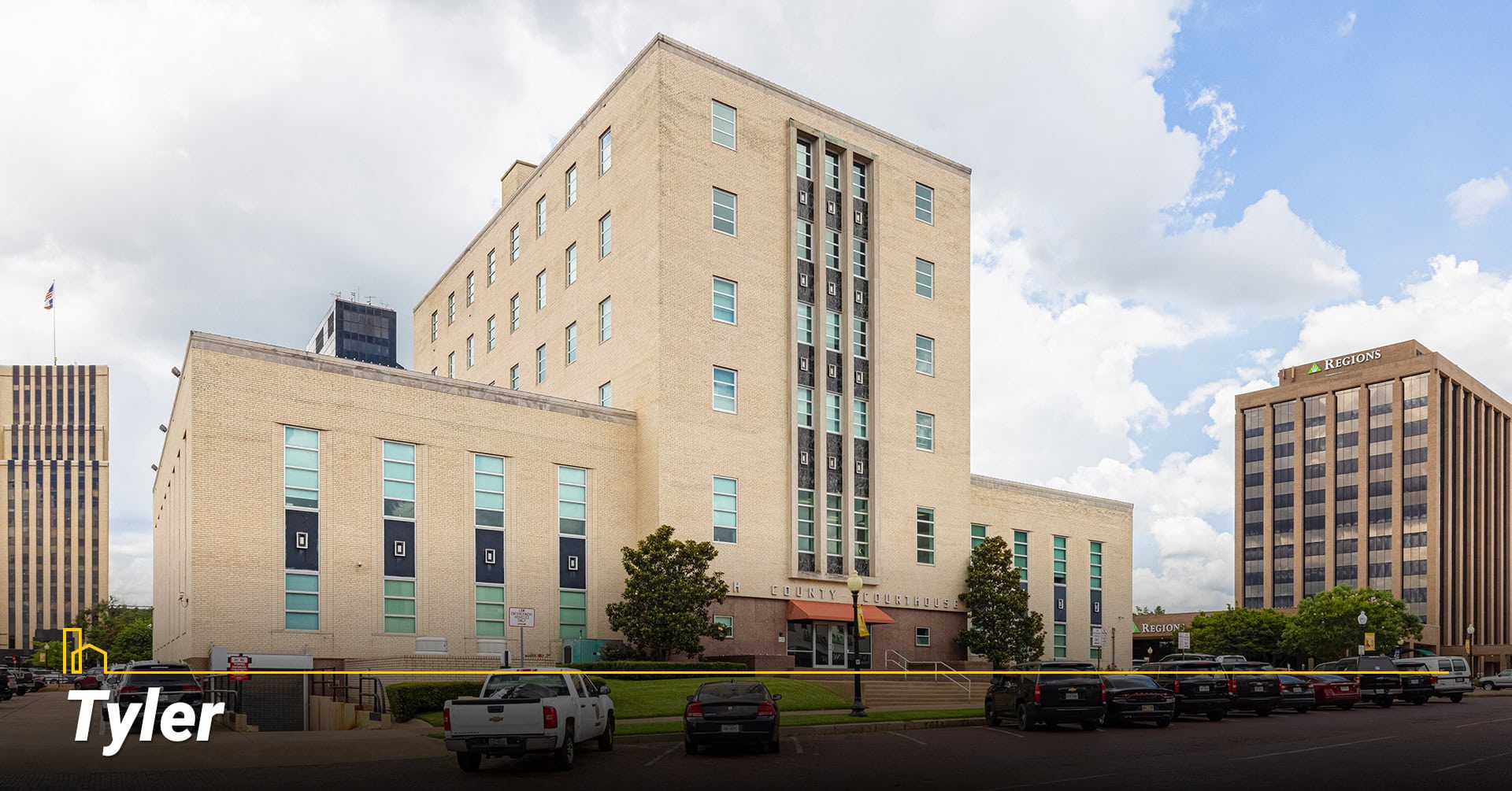
HOMEiA Score: 93/100
- Cost of Living: 7.8% below the U.S. national average
- Home price to income ratio: $314,950 / $52,000 = 6.06 (buying homes is affordable)
- Income to rent ratio: $52,000 / $16,620 = 3.13 (renting homes is affordable)
Known as the “Rose Capital of America,” Tyler offers retirees a high quality of life, mild weather, and a tight-knit community. Outdoor enthusiasts will enjoy Lake Tyler, Lake Palestine, and scenic trails at Tyler State Park. Sitting along a major highway, Tyler also allows those retirees looking to travel an easy route to surrounding citiees and states. The city’s cost of living is nearly 8% lower than the national average, and home prices are about 29% less than the U.S. median. Tyler’s cultural attractions, including art museums and festivals, make it a top choice for seniors seeking both relaxation and engagement.
The 10 Best Neighborhoods in San Antonio, Texas
In this comprehensive guide, we explore the top 10 neighborhoods to live in San Antonio, Texas; providing you with the inside scoop on the best that each has to offer. From the historic charm of Government Hill to the community spirit of the Arena District/Eastside, this guide will journey through the city’s popular and up-and-coming neighborhoods…
5. Amarillo
HOMEiA Score: 95/100
- Cost of Living: 10% below the U.S. national average
- Home price to income ratio: $232,500 / $55,000 = 4.23 (buying homes is very affordable)
- Income to rent ratio: $55,000 / $12,024 = 4.58 (renting homes is very affordable)
Amarillo stands out as one of the most affordable and welcoming retirement destinations in Texas. With 15.8% of residents aged 65 or older, retirees will find a strong sense of community and plenty of peers. The city’s rich cowboy heritage, access to Palo Duro Canyon, and vibrant arts scene offer both adventure and cultural enrichment. Festivals and rodeos always ensure there is something to do. Housing is budget-friendly, with median home prices and rents well below national averages, making Amarillo ideal for seniors seeking an active lifestyle without high costs.
Summary Table: Best Texas Cities for Retirees
| City | HOMEiA Score | Cost of Living (% Above/Below U.S. Avg.) | Home Price to Income Ratio | Income to Rent Ratio | Key Strengths |
| McAllen | 90/100 | 21% below | 5.31 | 3.94 | Low cost, abundant sunshine, walkable, accessible healthcare |
| Sugar Land | 91/100 | 13% above | 5.53 | 3.54 | Safety, accessible healthcare, suburban amenities, close to Houston |
| El Paso | 92/100 | 15.8% below | 4.27 | 2.68 | Low cost, accessible healthcare, multicultural |
| Tyler | 93/100 | 7.8% below | 6.06 | 3.13 | Nature, culture, mild climate |
| Amarillo | 95/100 | 10% below | 4.23 | 4.58 | Affordability, outdoors, community, cultural festivals |
Each of these Texas cities offers retirees a unique blend of affordability, lifestyle, and amenities. Whether you’re looking for small-town charm, vibrant suburban living, or a multicultural city with a low cost of living, Texas provides excellent options for a comfortable and active retirement.
Austin blends quirky charm, vibrant culture, and a spirit of freedom that locals love. With rapid growth and diverse neighborhoods, this guide helps you find the perfect place to call home, based on real local insight and the city’s unique mix of valor, swagger, and welcoming character….7 Best Neighborhoods in Austin, Texas (updated)
Texas Lifestyle: Arts, Food, and Recreation
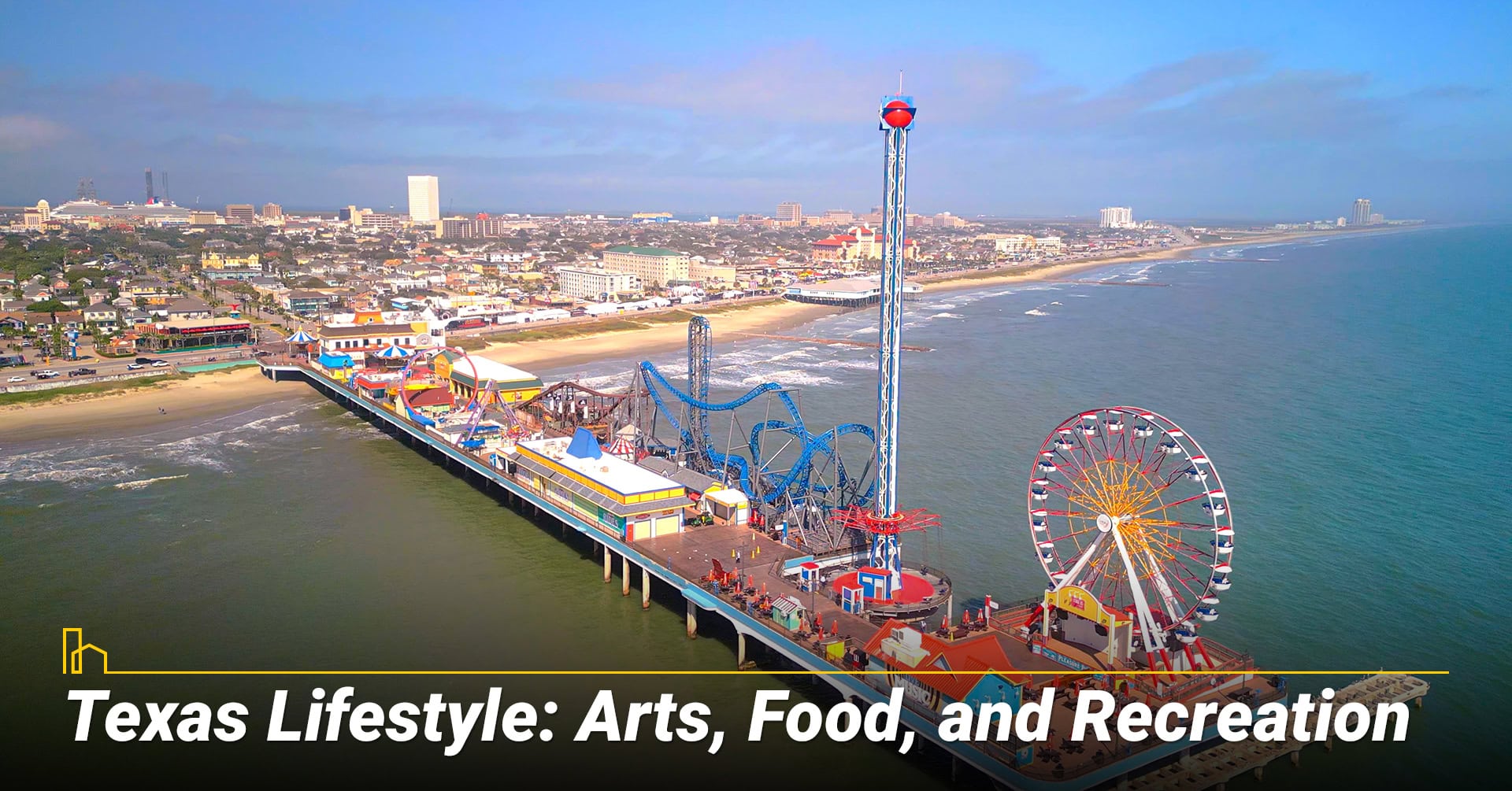
Texas’s cultural calendar is filled with music festivals, rodeos, and arts events, from the Houston Livestock Show and Rodeo to Austin’s renowned South by Southwest festival. The state’s food scene is legendary, with BBQ, Tex-Mex, and international cuisine dominating local festivals and restaurants. Outdoor enthusiasts will find endless opportunities for recreation, from hiking in Big Bend National Park to boating on the Gulf Coast. Texas’s sports culture is a source of pride with professional teams in every major league and a strong tradition of high school and college athletics. The only difficult decision is deciding which team to root for!
Here’s what makes the Texas lifestyle truly distinctive:
- Cultural Festivals: Experience the vibrant Fiesta San Antonio, Houston’s Art Car Parade, or Galveston’s Mardi Gras celebration – each showcasing Texas’s unique regional identities. Food festivals are abundant in the Lone Star State with something to please everyone’s palette.
- Music Heritage: Beyond Austin’s “Willie” nice live music scene and Austin City Limits festival, you can explore Texas’s rich musical traditions, from blues in Dallas’s Deep Ellum to country music and rap in Houston to conjunto in the Rio Grande Valley.
- Culinary Trails: Follow the Texas BBQ Trail through central Texas, sample authentic Tex-Mex along the border, or explore the emerging wine country in the Hill Country region with over 50 wineries. Don’t forget about the German beer gardens scattered between Austin and San Antonio, too!
- Outdoor Adventures: Discover lesser-known natural treasures like Enchanted Rock State Natural Area, Caddo Lake’s cypress forests, or the pristine beaches of South Padre Island. Big Bend and Davy Crockett National Forest also offer pristine areas for
- Small-Town Charm: Visit historic small towns like Fredericksburg for German heritage, Jefferson to see Victorian architecture, or Marfa for the emerging art scene. Smal towns throughout the Lone Star State all offer unique cultural experiences.There is something for everyone!
- Sporting Traditions: Beyond professional teams, experience the famous Friday Night Lights high school football culture, watch world-class rodeo competitions, and take part in tailgating traditions that unite the state.
- Art Destinations: Explore world-class museums like the Kimbell Art Museum in Fort Worth, the Menil Collection in Houston, the Blanton Museum in Austin, or San Antonio’s transformed Pearl District arts complex. Local artists are scattered throughout the state waiting for you to come see their new creations!
This diverse tapestry of experiences makes the Texas lifestyle appealing to newcomers from all backgrounds, offering both traditional cultural touchstones and contemporary entertainment options throughout the state. The Lone Star State has something for everyone.
Conclusion
Texas offers a compelling blend of economic opportunity, cultural richness, and affordable living, making it an attractive destination for young professionals, families, and retirees alike. However, it is essential to weigh the state’s challenges—such as hot summers, high property taxes, and limited public transportation—against its many benefits. By carefully considering your priorities and researching specific communities, you can find the perfect Texas location for your next chapter in the American South.
Recommended for you
Frequently Asked Questions About Living in Texas
1. What is the cost of living in Texas compared to other states? Texas’s cost of living is about 5-7% lower than the national average, with particularly affordable housing and everyday expenses. However, high property taxes can offset some of these savings, especially for homeowners.
2. How severe is the weather in Texas? Texas experiences hot summers and is prone to extreme weather events such as hurricanes, tornadoes, and droughts. Preparedness is essential, especially in coastal and northern regions.
3. Is Texas a good place for families? Yes, many Texas cities are recognized for their family-friendly amenities, strong schools, and supportive communities. However, it is important to research local school ratings and community resources before choosing a specific neighborhood.
4. What are the job prospects in Texas? Texas offers a booming job market in tech, energy, healthcare, and more, with major corporations and startups alike expanding in the state. Opportunities vary by region, so it is important to consider your field and preferred location. The tech and medical industry both continue to flourish throughout the state.
5. How is healthcare access in Texas? While urban centers have world-class hospitals, public healthcare access and insurance coverage are limited, especially in rural areas. It is advisable to research local healthcare options before relocating. The growing population is emerging alongside a growing medical industry. Medical professionals are expanding their practices to reach more rural parts of the state.
6. What are the best outdoor activities in Texas? Residents enjoy hiking, camping, boating, fishing, and attending festivals year-round, thanks to the state’s diverse landscapes and mild winters. Texas’s natural beauty supports an active, outdoor lifestyle for all ages.
7. What should newcomers know about Texas taxes? Texas has no state income tax but compensates with high property taxes. Sales taxes and other fees also apply, but overall tax burdens are often lower than in high-tax states.
8. What are the most affordable places to live in Texas? Cities like El Paso, Brownsville, Amarillo, and McAllen offer the lowest cost of living, while Austin and Dallas are more expensive but provide greater amenities and job opportunities.
9. How do I plan for a successful Texas relocation? Create a comprehensive relocation checklist that includes researching neighborhoods, understanding the job market, securing housing, planning for hot summers and property taxes, and considering transportation needs before your move. Our guide is here to help you consider your options as you debate your move to the Lone Star State.
10. What is the Texas housing market forecast for 2025? The market is stabilizing after rapid growth, with increased inventory and potential price corrections expected in some areas. Affordability remains a key advantage compared to coastal states, but buyers should stay informed about local trends. New apartment and townhome complexes are plentiful throughout the state as the state’s population continues to grow, however.
3 Most Affordable and Safe Neighborhoods to Live in San Antonio, Texas
With an advantageous tax structure, a low cost of living, and a warm, diversified climate, San Antonio blends financial attractiveness and cultural life, making it a dynamic and cheap Texas destination…
Alexandra is a medical doctor that mostly works in pharmaceuticals, medical research and wiriting. She currently lives and works in Texas, and travels throughout the Lone Star State extensively. Having lived in multiple U.S. states and Latin American countries, she brings a culturally rich perspective to her travels. Outside her medical career, she indulges her love for travel through writing, capturing the essence of each place she visits—from local traditions, unique culinary experiences, customs and the best places to visit. Her travel stories are a reflection of her personal adventures and curiosity, inviting readers to embrace the joy of discovery in diverse corners of the world.
HOMEiA is a city guide site where visitors can find detailed information about communities of interest. HOMEiA’s City Guides, created in partnership with local writers and editors, are curated lists of the best, safest, and most affordable places to live. The guides feature the HOMEiA Score, a proprietary index that rates communities on such factors as housing costs, education, employment, etc.
HOMEiA.com aims to be the premier site for people planning to relocate, providing them with insightful content and connecting them with skilled real estate professionals.
We also empower real estate professionals to establish or strengthen their web presence by highlighting their experience, knowledge and achievements. If you’re selected to join our list of certified real estate professionals, you will distinguish yourself from your peers — and earn HOMEiA’s support.
If you believe in HOMEiA’s mission, please share our website with others.







